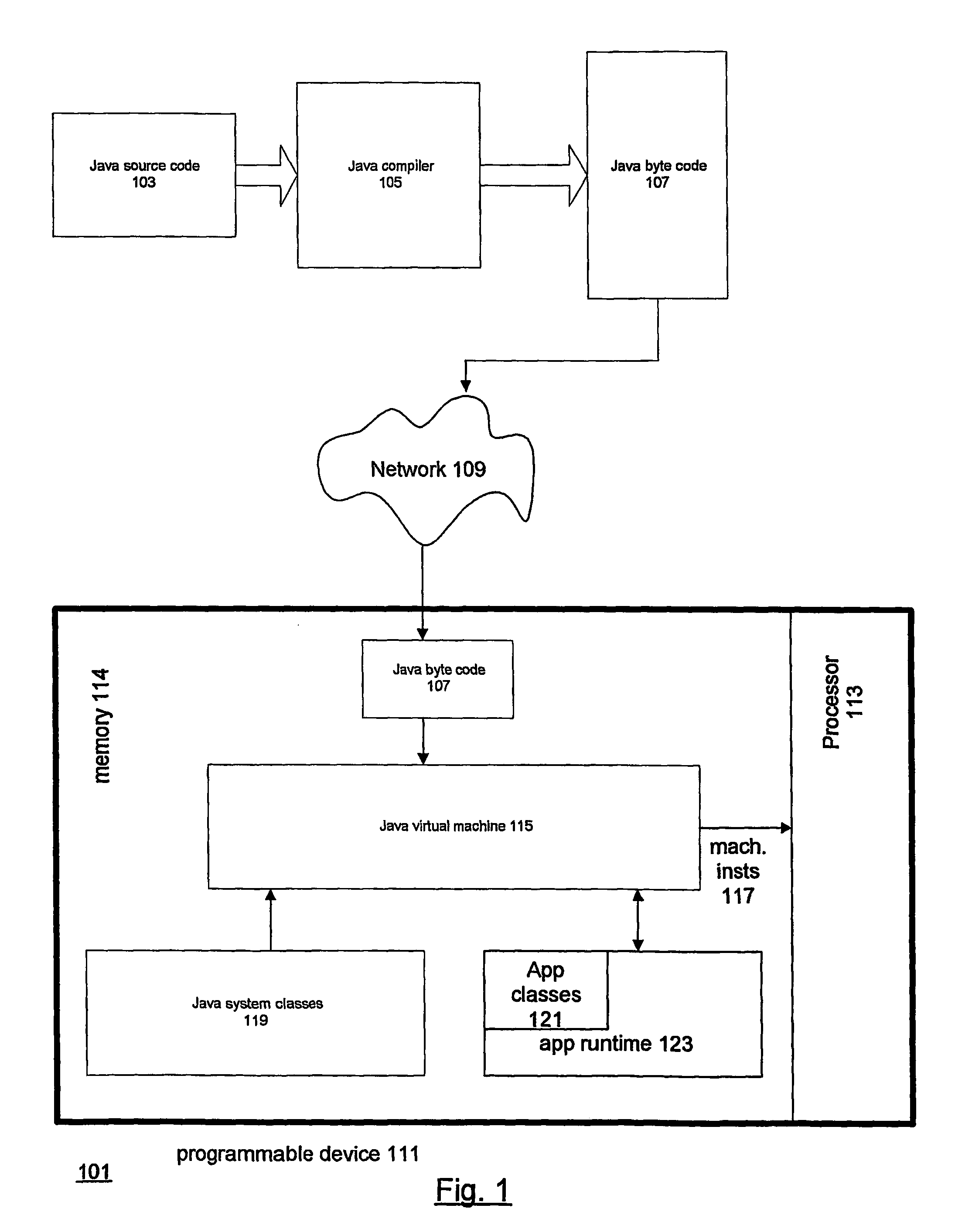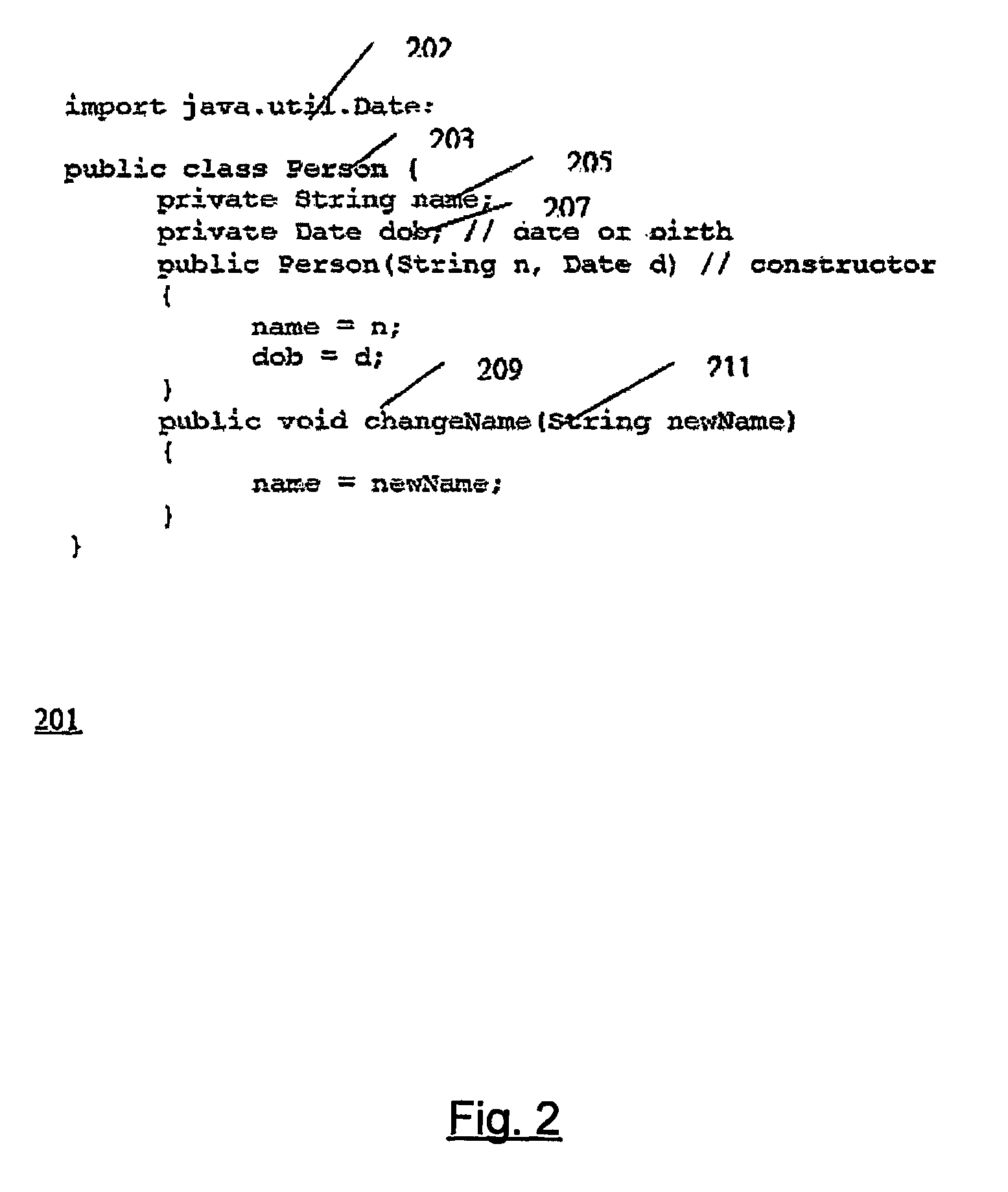Protecting mobile code against malicious hosts
a mobile code and host technology, applied in the direction of program/content distribution protection, computer security arrangements, transmission, etc., can solve the problems of malicious hosts, code mobility is a problem, and /b> does, however, have a significant disadvantag
- Summary
- Abstract
- Description
- Claims
- Application Information
AI Technical Summary
Benefits of technology
Problems solved by technology
Method used
Image
Examples
Embodiment Construction
[0049]The following Detailed Description will first present the description of obfuscation techniques from U.S. Ser. No. 10 / 019,828 and then the description of code watermarking techniques from U.S. Ser. No. 10 / 019,827 and will finally describe how these techniques can be combined to provide multi-layer protection of mobile code against malicious hosts.
Obfuscation Techniques for Mobile Code
[0050]The following Detailed Description will first present two new techniques for code obfuscation generally and will then present techniques which employ encryption for obfuscation and thereby overcome the problems which Java system-defined symbolic names or other “well-known” names pose for obfuscation.
Data Field Obfuscation: FIGS. 2-4
[0051]FIG. 2 shows a class definition 201 in the Java language as it might be written in Java source code. The following discussion shows how all of the symbolic names in the class definition may be obfuscated by replacing them with less-informative names. Though ...
PUM
 Login to View More
Login to View More Abstract
Description
Claims
Application Information
 Login to View More
Login to View More - R&D
- Intellectual Property
- Life Sciences
- Materials
- Tech Scout
- Unparalleled Data Quality
- Higher Quality Content
- 60% Fewer Hallucinations
Browse by: Latest US Patents, China's latest patents, Technical Efficacy Thesaurus, Application Domain, Technology Topic, Popular Technical Reports.
© 2025 PatSnap. All rights reserved.Legal|Privacy policy|Modern Slavery Act Transparency Statement|Sitemap|About US| Contact US: help@patsnap.com



